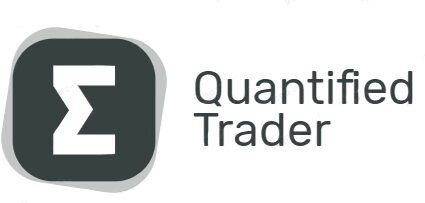Python has emerged as a go-to programming language for financial data analysis and investment research due to its flexibility and extensive library ecosystem. Among the many powerful libraries available, Investpy stands out as a comprehensive tool for accessing and analyzing financial market data.
In this article, we will explore the functionalities of Investpy and examine the significance of its key parameters.
Investpy offers a wide range of functions and parameters for accessing and analyzing financial market data. Instead, I can provide you with an overview of the main functions and their significance. You can refer to the Investpy documentation for a comprehensive understanding of all available functions and parameters.
search_quotes(text, products=None, countries=None, n_results=5, as_json=False):- Allows you to search for financial instruments based on a text query.
- Parameters:
text: The query string to search for financial instruments.products(optional): List of products to search within (e.g., stocks, ETFs, indices).countries(optional): List of countries to search within.n_results(optional): Number of search results to retrieve.as_json(optional): Boolean value to specify whether to return results as JSON.
get_stock_historical_data(stock, country, from_date, to_date, as_json=False, order='ascending'):- Retrieves historical stock data for a specific stock symbol and country.
- Parameters:
stock: Stock symbol or name.country: Country of the stock exchange.from_date: Starting date for historical data.to_date: Ending date for historical data.as_json(optional): Boolean value to specify whether to return results as JSON.order(optional): Specifies the order of retrieved data (ascending or descending).
get_stock_recent_data(stock, country, as_json=False, order='ascending'):- Retrieves recent stock data for a specific stock symbol and country.
- Parameters:
stock: Stock symbol or name.country: Country of the stock exchange.as_json(optional): Boolean value to specify whether to return results as JSON.order(optional): Specifies the order of retrieved data (ascending or descending).
get_stock_information(stock, country, as_json=False):- Retrieves detailed information about a specific stock.
- Parameters:
stock: Stock symbol or name.country: Country of the stock exchange.as_json(optional): Boolean value to specify whether to return results as JSON.
get_index_historical_data(index, country, from_date, to_date, as_json=False, order='ascending'):- Retrieves historical data for a specific index in a particular country.
- Parameters:
index: Index symbol or name.country: Country of the stock exchange.from_date: Starting date for historical data.to_date: Ending date for historical data.as_json(optional): Boolean value to specify whether to return results as JSON.order(optional): Specifies the order of retrieved data (ascending or descending).
get_currency_cross_historical_data(currency_cross, from_date, to_date, as_json=False, order='ascending'):- Retrieves historical data for a specific currency cross pair.
- Parameters:
currency_cross: Currency cross pair symbol.from_date: Starting date for historical data.to_date: Ending date for historical data.as_json(optional): Boolean value to specify whether to return results as JSON.order(optional): Specifies the order of retrieved data (ascending or descending).
These functions represent a small portion of the capabilities provided by the Investpy API. The parameters associated with each function allow you to specify the stock or index symbol, country, date range, and other options to retrieve the desired financial data.
import investpy
# Download Stock Data
def download_stock_data(stock, country, from_date, to_date):
# Retrieve historical stock data
stock_data = investpy.get_stock_historical_data(stock=stock, country=country,
from_date=from_date, to_date=to_date)
# Save the data to a CSV file
stock_data.to_csv(f"{stock}_data.csv")
print(f"Stock data downloaded and saved as {stock}_data.csv")
# Download Option Data
def download_option_data(option, country, from_date, to_date):
# Retrieve historical option data
option_data = investpy.get_option_historical_data(option=option, country=country,
from_date=from_date, to_date=to_date)
# Save the data to a CSV file
option_data.to_csv(f"{option}_data.csv")
print(f"Option data downloaded and saved as {option}_data.csv")
# Main Program
if __name__ == "__main__":
# Specify the stock and option details
stock = "AAPL"
option = "AAPL210617C00300000" # Example call option for AAPL with expiry date
country = "United States"
from_date = "01/01/2022"
to_date = "31/12/2022"
# Download stock data
download_stock_data(stock, country, from_date, to_date)
# Download option data
download_option_data(option, country, from_date, to_date)Investpy simplifies the process of data analysis and research, enabling users to access a wealth of financial information effortlessly. Whether you are examining historical stock performance, analyzing index trends, or studying currency cross rates, Investpy offers the tools to gather accurate and up-to-date data.
With Investpy, users can leverage the power of Python to automate data retrieval processes, conduct in-depth analyses, and make informed investment decisions. The library’s intuitive interface and comprehensive documentation make it accessible to users of all skill levels, from novice investors to seasoned analysts.
Conclusion
Investpy is a powerful Python library that simplifies financial data analysis, granting users easy access to real-time and historical market data. By utilizing its functions and understanding the significance of each parameter, investors and analysts can make data-driven decisions and optimize their investment strategies for success.
FAQs
How can I install Investpy?
Investpy can be installed using the Python package manager, pip. Simply run the command “pip install investpy” in your Python environment to install the library.
Can I retrieve stock data for a specific date range?
Yes, Investpy provides functions like get_stock_historical_data() and get_index_historical_data() that allow you to specify the desired date range to retrieve historical data.
Can I retrieve real-time stock prices?
Yes, Investpy offers functions such as get_stock_recent_data() that enable users to retrieve real-time stock prices for a specific stock and country.
Which countries and exchanges are supported by Investpy?
Investpy supports a wide range of countries and their respective exchanges. Some notable examples include the United States (NYSE, NASDAQ), United Kingdom (LSE), Germany (XETRA), Japan (TSE), and more.
Can I analyze currency exchange rates using Investpy?
Yes, Investpy allows users to retrieve historical and real-time currency exchange rates using functions like get_currency_cross_historical_data(). This feature is helpful for analyzing foreign exchange markets.
Is Investpy suitable for both beginners and advanced users?
Yes, Investpy caters to users of all skill levels. Its user-friendly interface and extensive documentation make it accessible to beginners, while its comprehensive features provide advanced functionalities for experienced users.

